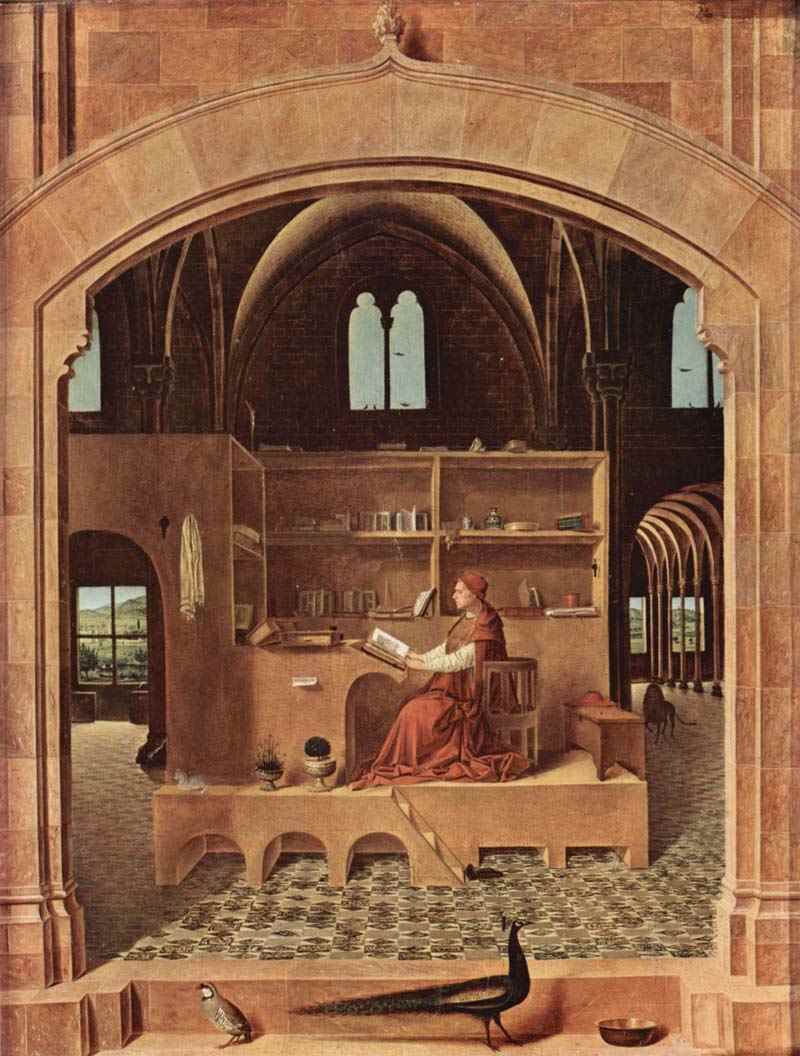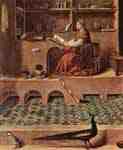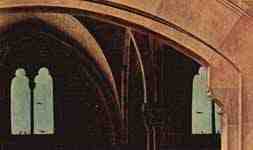
St. Jerome in his Study, Antonello da Messina
around 1474, oil on wood, 46 × 36.5 cm
London, National Gallery
------------
Hl. Hieronymus im Gehäus, Antonello da Messina
um 1474, Öl auf Holz, 46 × 36,5 cm
London, National Gallery
----
, Λονδίνο
----
St. Jerome in His Study is a painting by the Italian Renaissance master Antonello da Messina, thought to have been completed around 1460-1475. It is in the collection of the National Gallery, London.
The picture was painted by Antonello during his Venetian sojourn, and was property of Antonio Pasqualino.

St. Jerome in his Study, Detail, Antonello da Messina
 St. Jerome in his Study, Detail, Antonello da Messina
St. Jerome in his Study, Detail, Antonello da Messina
 St. Jerome in his Study, Detail, Antonello da Messina
St. Jerome in his Study, Detail, Antonello da Messina

St. Jerome in his Study, Detail, Antonello da Messina

St. Jerome in his Study, Detail, Antonello da Messina
See also: St. Jerome, Paintings, Drawings
Description
The small picture portrays St. Jerome working in his studio, a room without walls and ceiling seen from a kind of triumphal arch (probably within some church of Aragonese style). As in several other works by the Messinese painter, the main scene is accompanied by a host of details, that have point of contacts with the contemporary Flemish school: books, animals, objects, all painted with a magnificent taste for details and "optical truth".
The scene is devised such that the light rays coincide with the perspective axes, centering on the saints's bust and hands. A Mediterranean landscape is hinted at through the windows opening on both sides of the study. Animals include a partridge (alectoris graeca) and a peacock, in the foreground, both having symbolical meanings, a cat and a mysterious lion in the shade on the right.
Symbolism
Antonello uses many symbols throughout the painting. The book he is reading represents knowledge. The books surrounding St. Jerome refer to his translation of the Bible into Latin, the Vulgate. The lion in the shadows to the right of the saint is from a story where St. Jerome pulls a thorn out of a lion's paws. In gratitude, the lion follows St. Jerome around for the rest of his life, like a house cat. The peacock and partridge have no importance to the story of St. Jerome. However, the peacock more generally symbolizes immortality.
References
Battisti, Eugenio. Antonello, il teatro sacro, gli spazi, la donna (Il labirinto). Palermo: Novecento. ISBN 88-373-0021-2.
----
Fine Art Prints | Greeting Cards | Phone Cases | Lifestyle | Face Masks | Men's , Women' Apparel | Home Decor | jigsaw puzzles | Notebooks | Tapestries | ...
----
Retrieved from "http://en.wikipedia.org/"
All text is available under the terms of the GNU Free Documentation License


